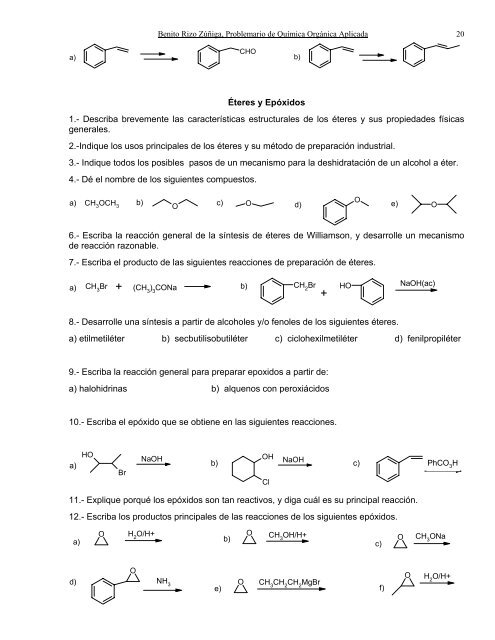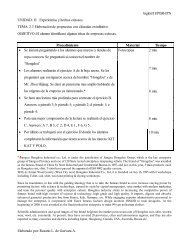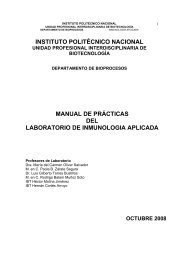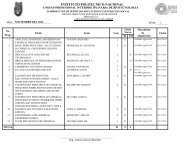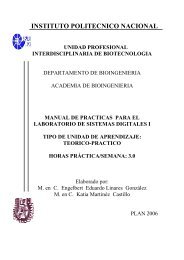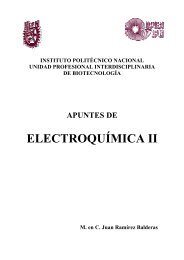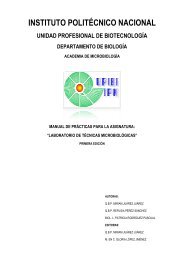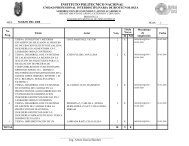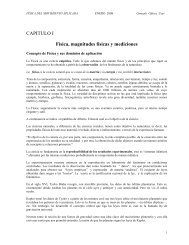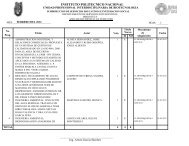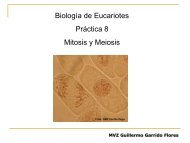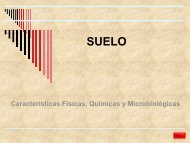Problemario de Química Orgánica Aplicada - biblioteca upibi ...
Problemario de Química Orgánica Aplicada - biblioteca upibi ...
Problemario de Química Orgánica Aplicada - biblioteca upibi ...
You also want an ePaper? Increase the reach of your titles
YUMPU automatically turns print PDFs into web optimized ePapers that Google loves.
Benito Rizo Zúñiga, <strong>Problemario</strong> <strong>de</strong> <strong>Química</strong> <strong>Orgánica</strong> <strong>Aplicada</strong> 20<br />
CHO<br />
a) b)<br />
Éteres y Epóxidos<br />
1.- Describa brevemente las características estructurales <strong>de</strong> los éteres y sus propieda<strong>de</strong>s físicas<br />
generales.<br />
2.-Indique los usos principales <strong>de</strong> los éteres y su método <strong>de</strong> preparación industrial.<br />
3.- Indique todos los posibles pasos <strong>de</strong> un mecanismo para la <strong>de</strong>shidratación <strong>de</strong> un alcohol a éter.<br />
4.- Dé el nombre <strong>de</strong> los siguientes compuestos.<br />
a) CH<br />
O<br />
O<br />
O<br />
3OCH b) 3 c) d) e)<br />
6.- Escriba la reacción general <strong>de</strong> la síntesis <strong>de</strong> éteres <strong>de</strong> Williamson, y <strong>de</strong>sarrolle un mecanismo<br />
<strong>de</strong> reacción razonable.<br />
7.- Escriba el producto <strong>de</strong> las siguientes reacciones <strong>de</strong> preparación <strong>de</strong> éteres.<br />
a) CH Br 3 + (CH ) CONa b)<br />
CH Br<br />
3 3<br />
2 HO<br />
8.- Desarrolle una síntesis a partir <strong>de</strong> alcoholes y/o fenoles <strong>de</strong> los siguientes éteres.<br />
+<br />
O<br />
NaOH(ac)<br />
a) etilmetiléter b) secbutilisobutiléter c) ciclohexilmetiléter d) fenilpropiléter<br />
9.- Escriba la reacción general para preparar epoxidos a partir <strong>de</strong>:<br />
a) halohidrinas b) alquenos con peroxiácidos<br />
10.- Escriba el epóxido que se obtiene en las siguientes reacciones.<br />
a)<br />
HO<br />
Br<br />
NaOH<br />
b)<br />
OH<br />
Cl<br />
NaOH<br />
c) PhCO3H 11.- Explique porqué los epóxidos son tan reactivos, y diga cuál es su principal reacción.<br />
12.- Escriba los productos principales <strong>de</strong> las reacciones <strong>de</strong> los siguientes epóxidos.<br />
d)<br />
a)<br />
O H2O/H+ O CH3OH/H+ b)<br />
O CH3ONa c)<br />
O<br />
NH3 O CH3CH2CH2MgBr e) f)<br />
O H 2 O/H+


